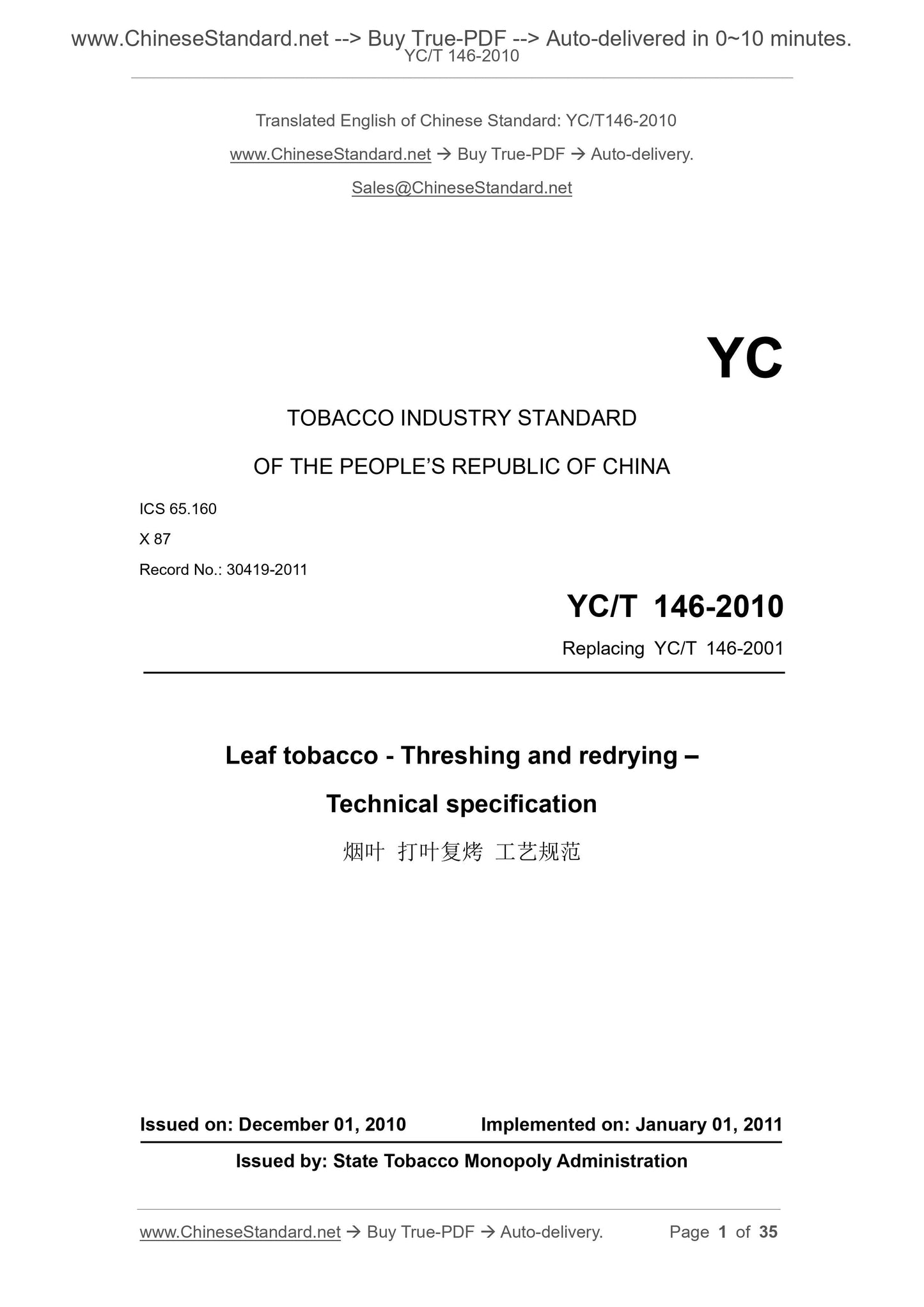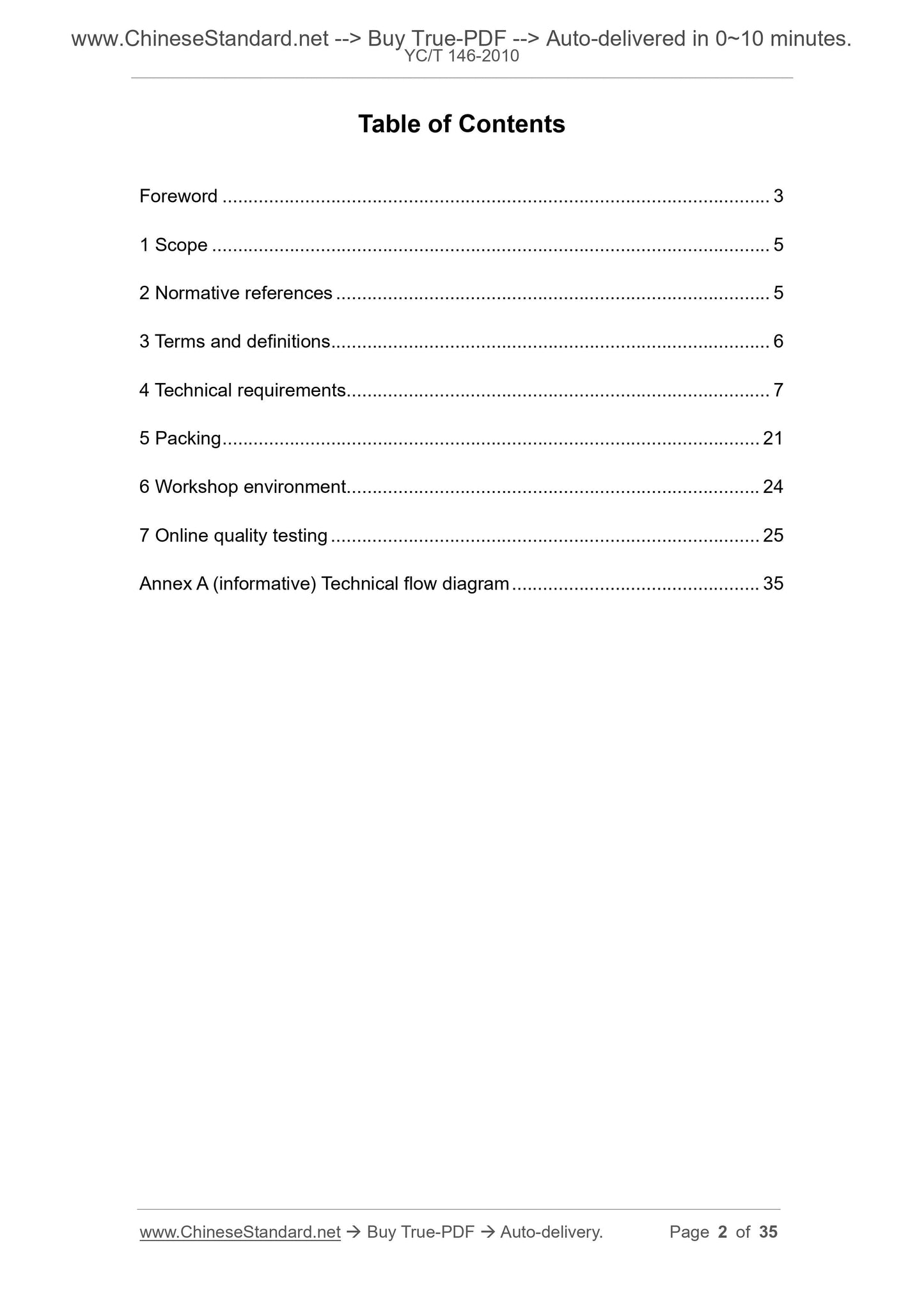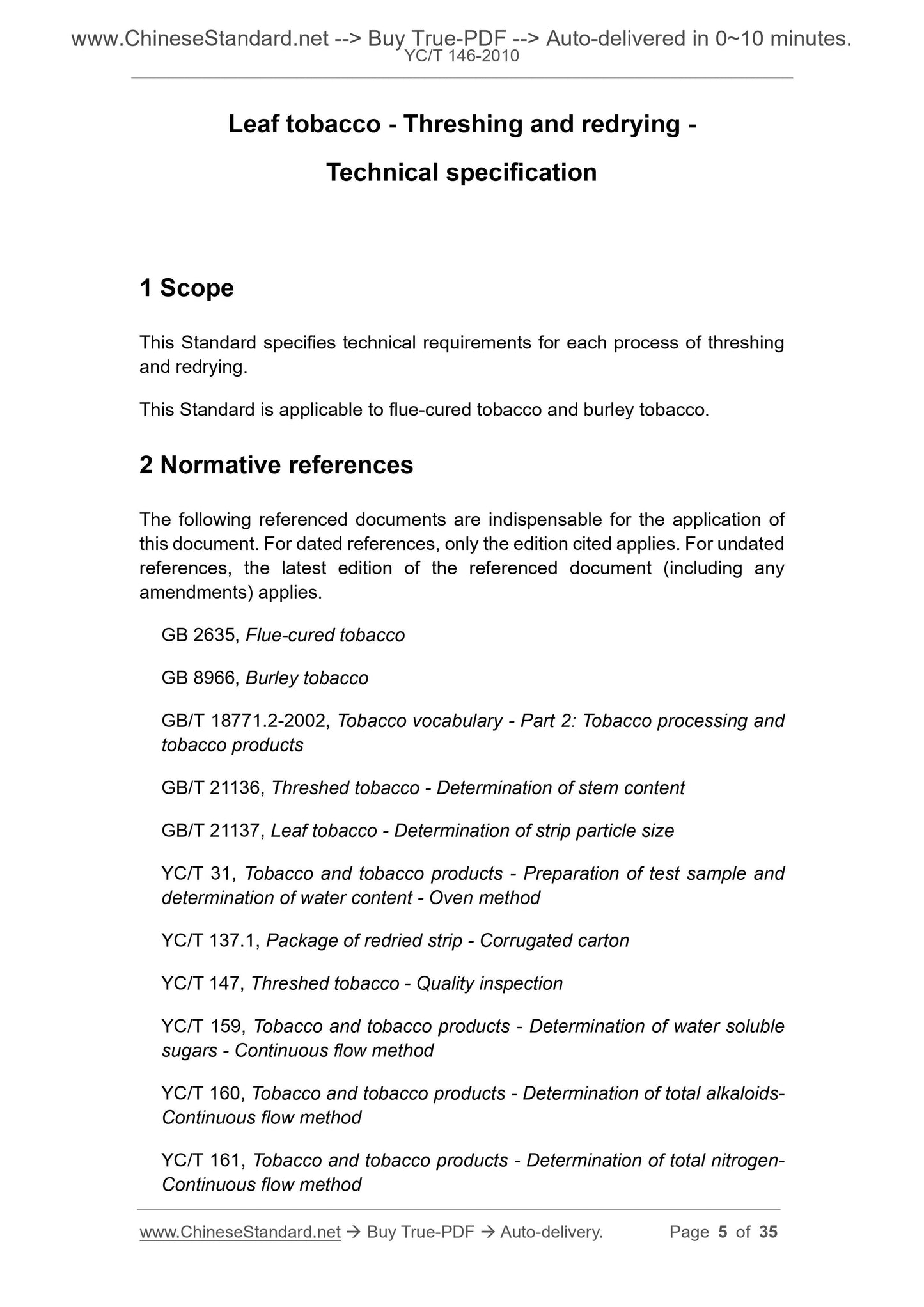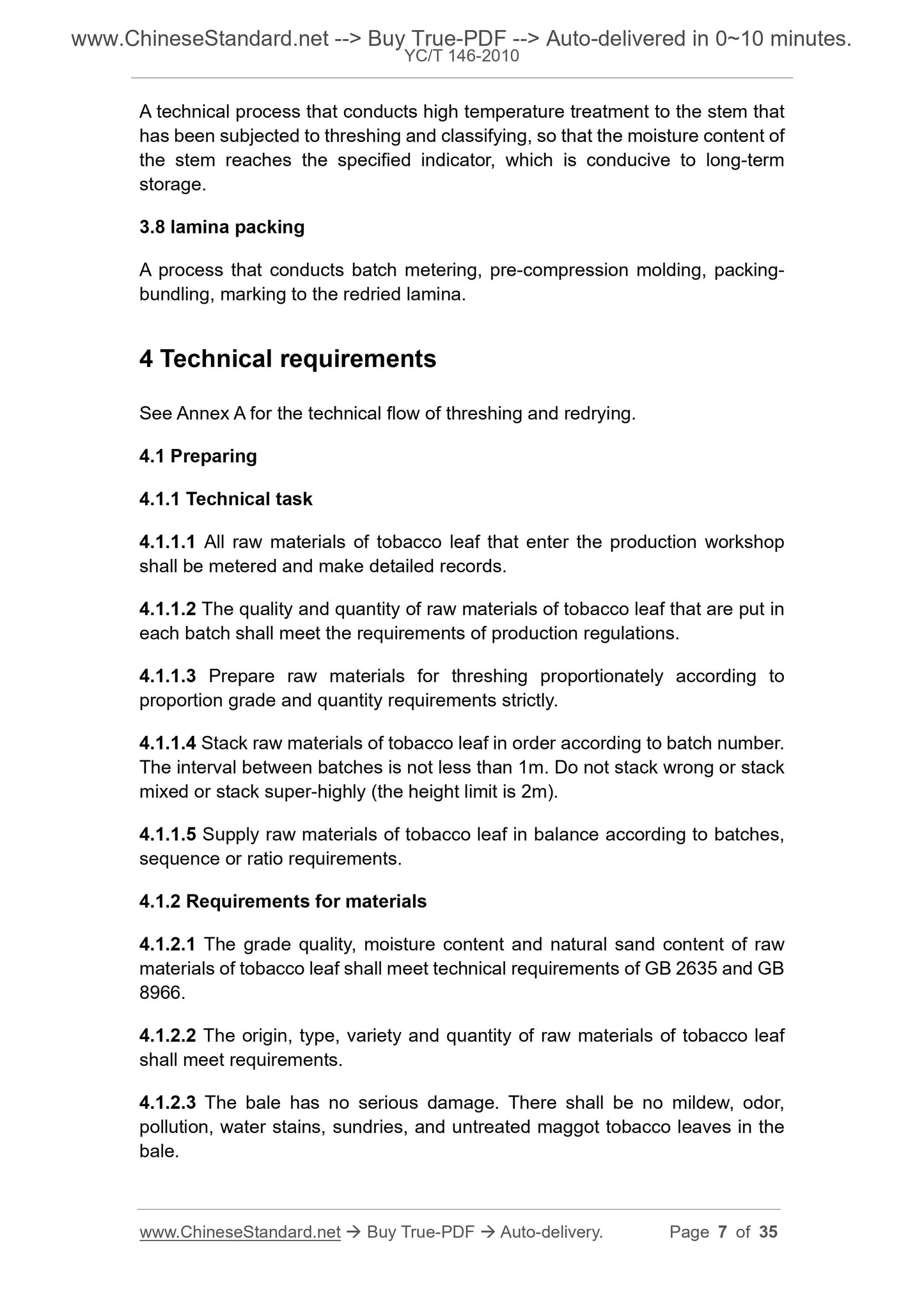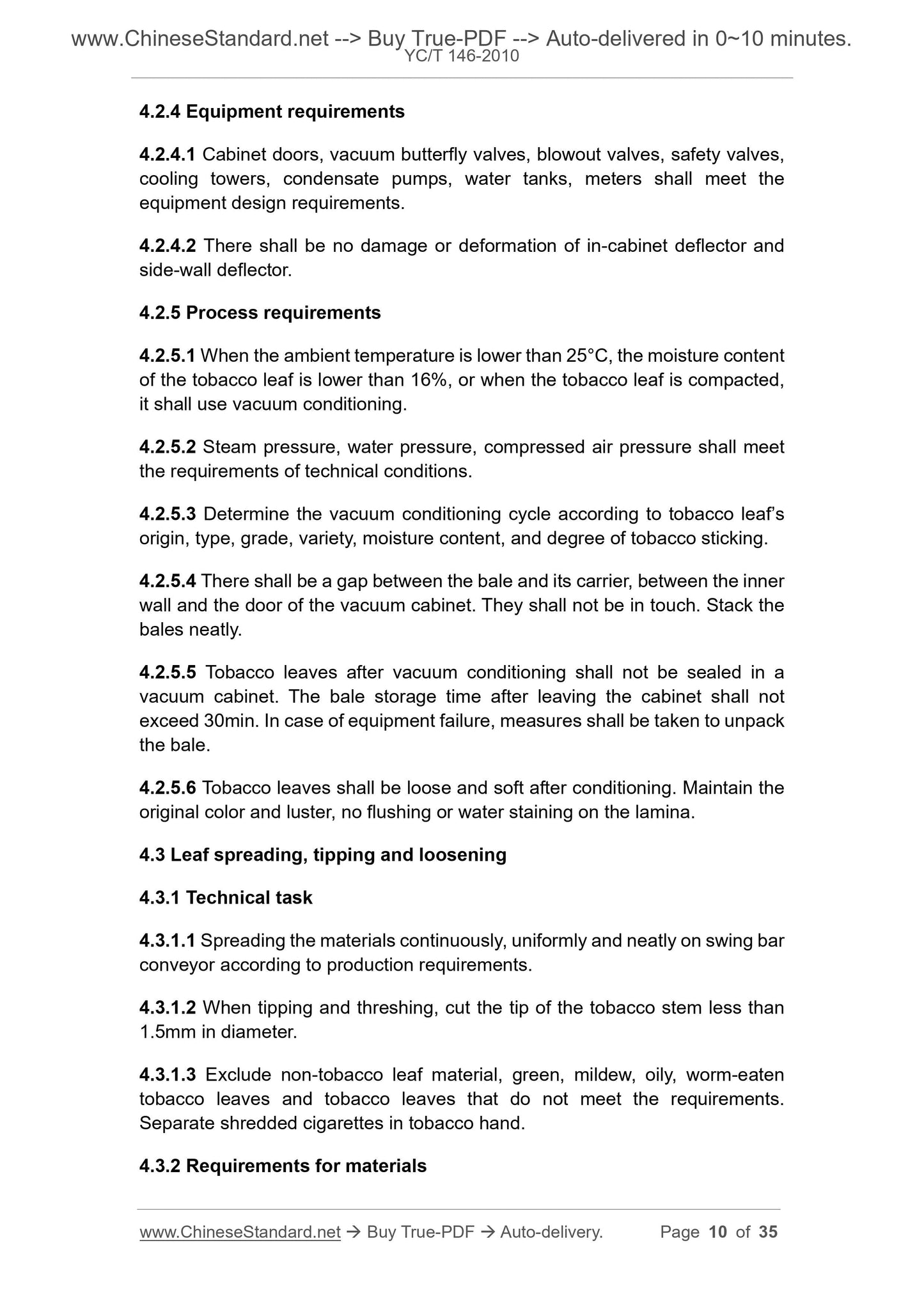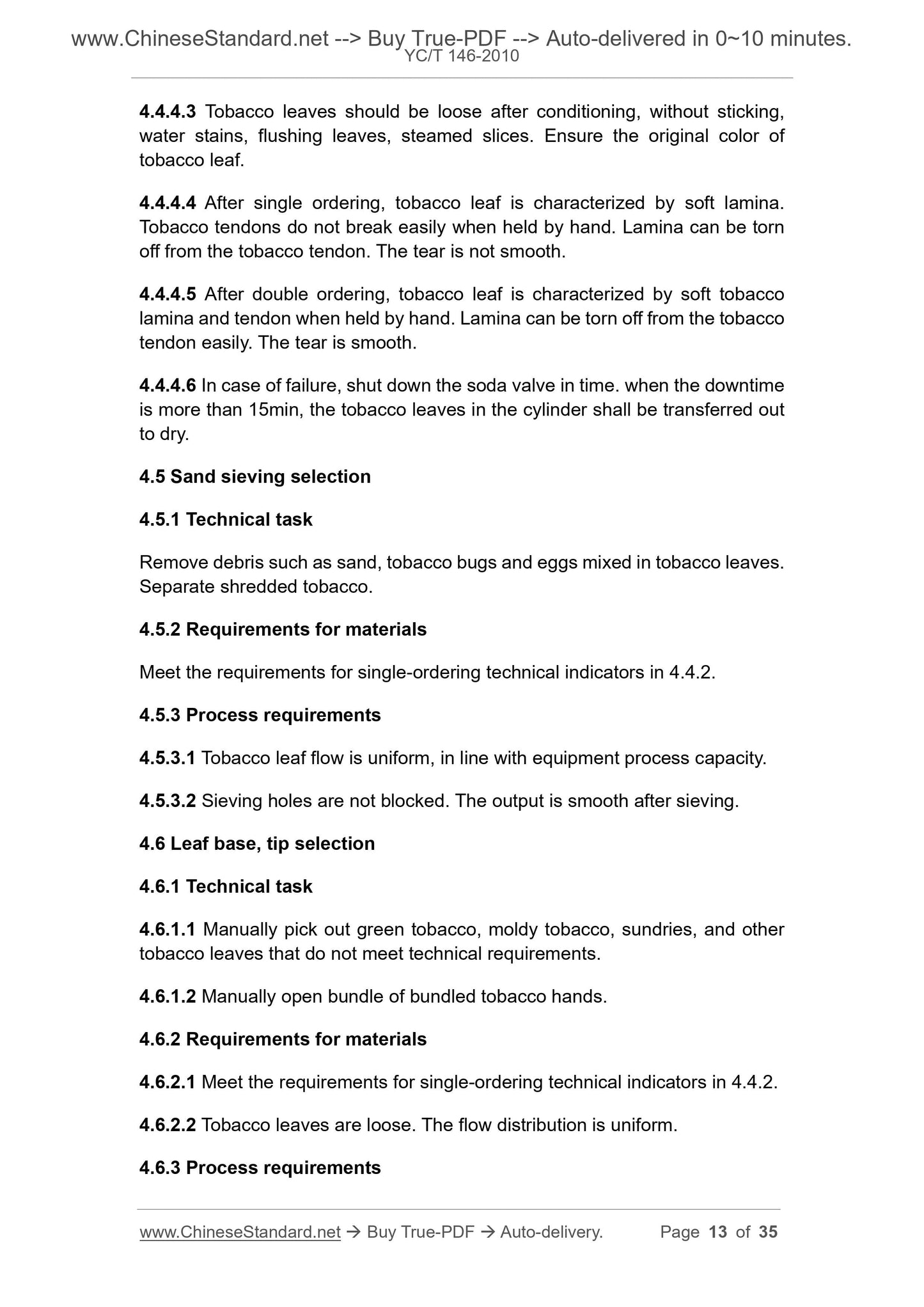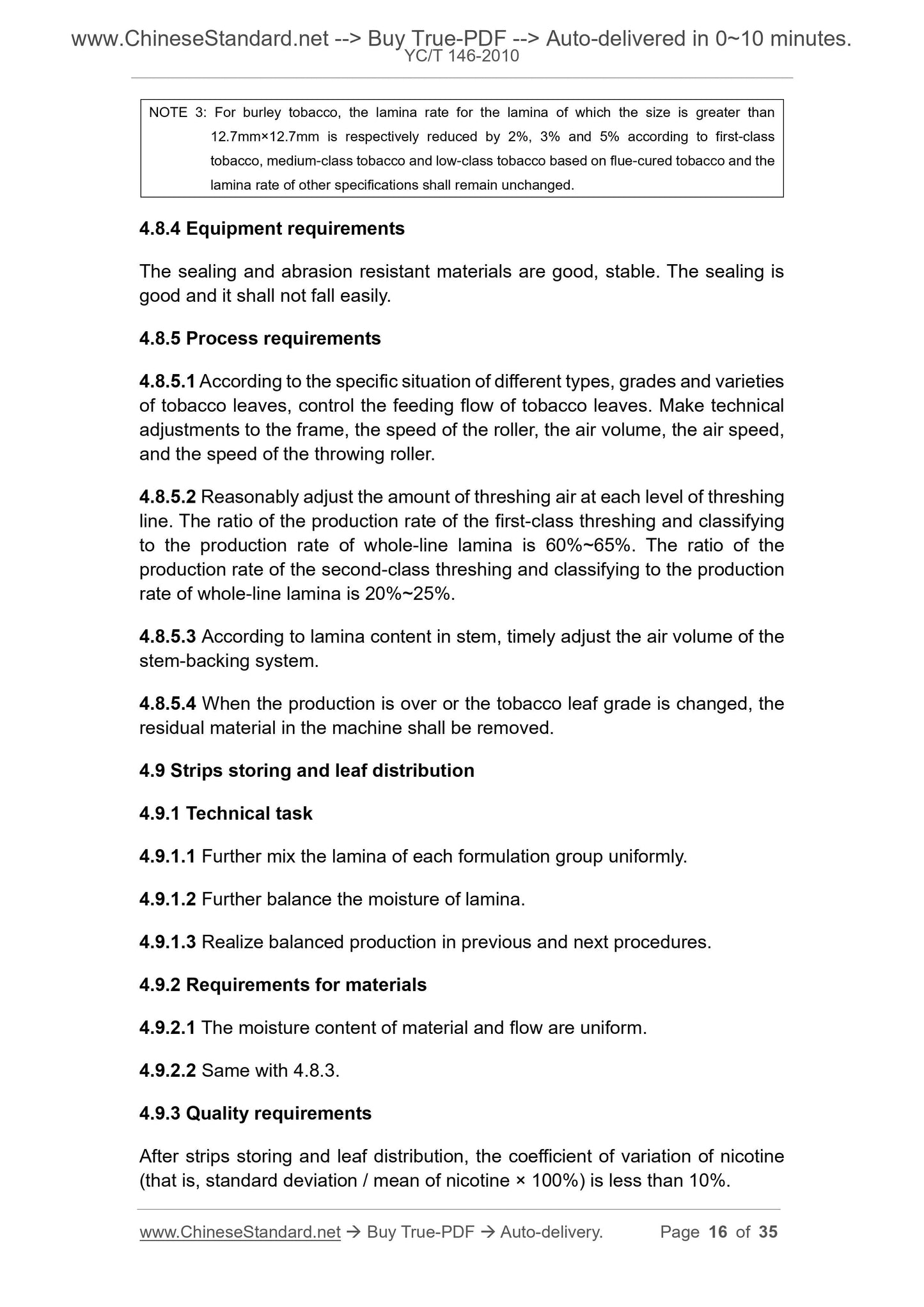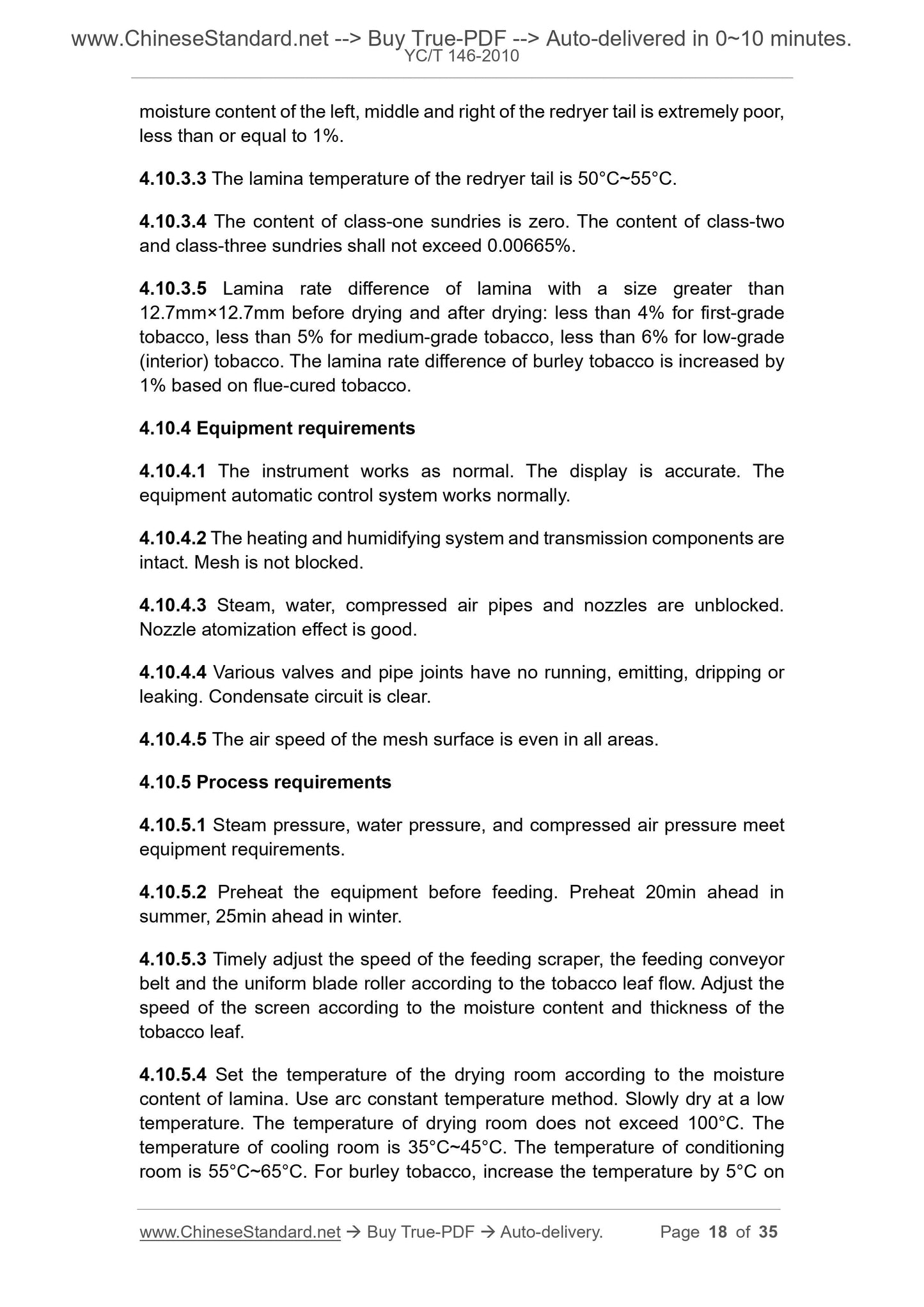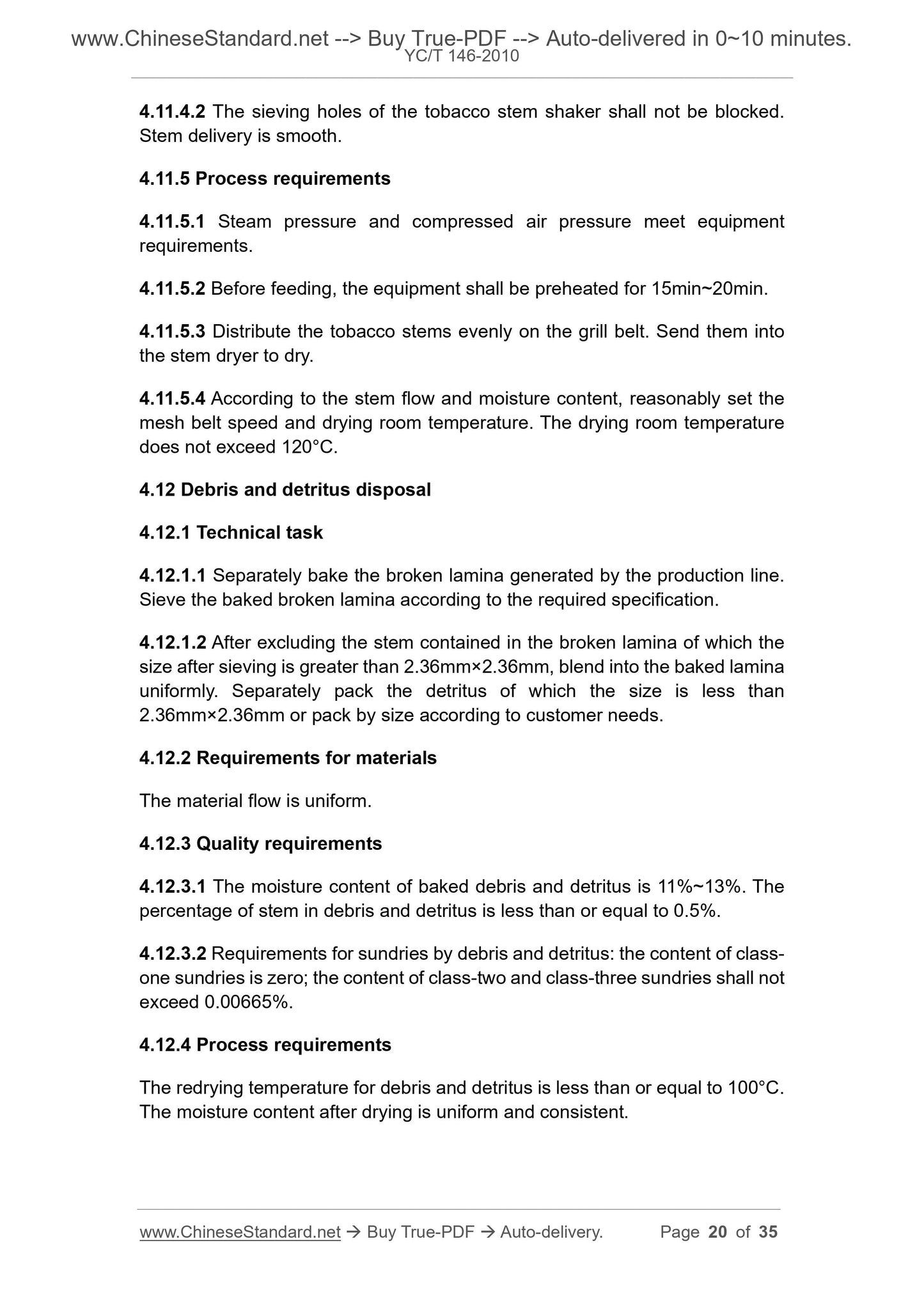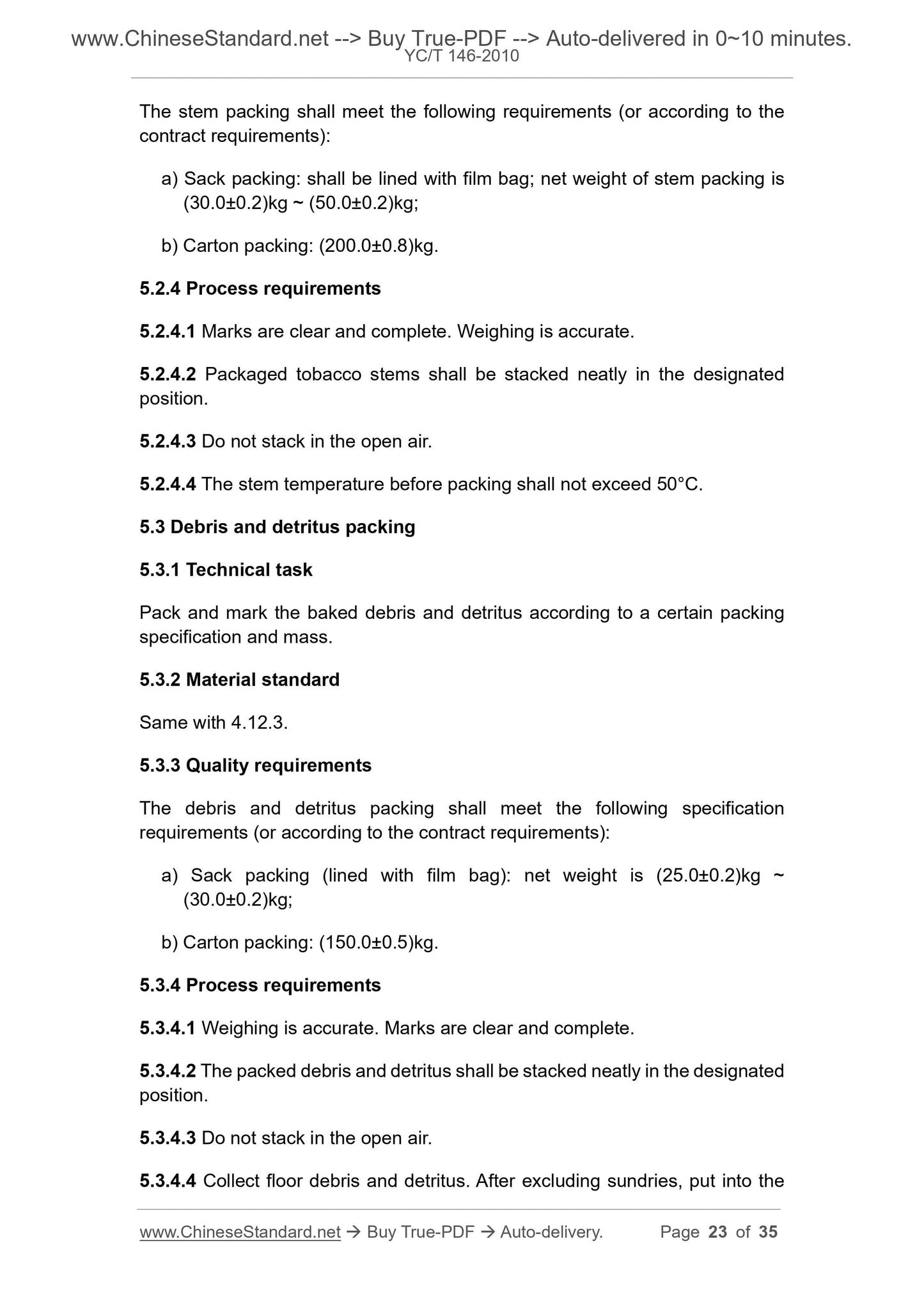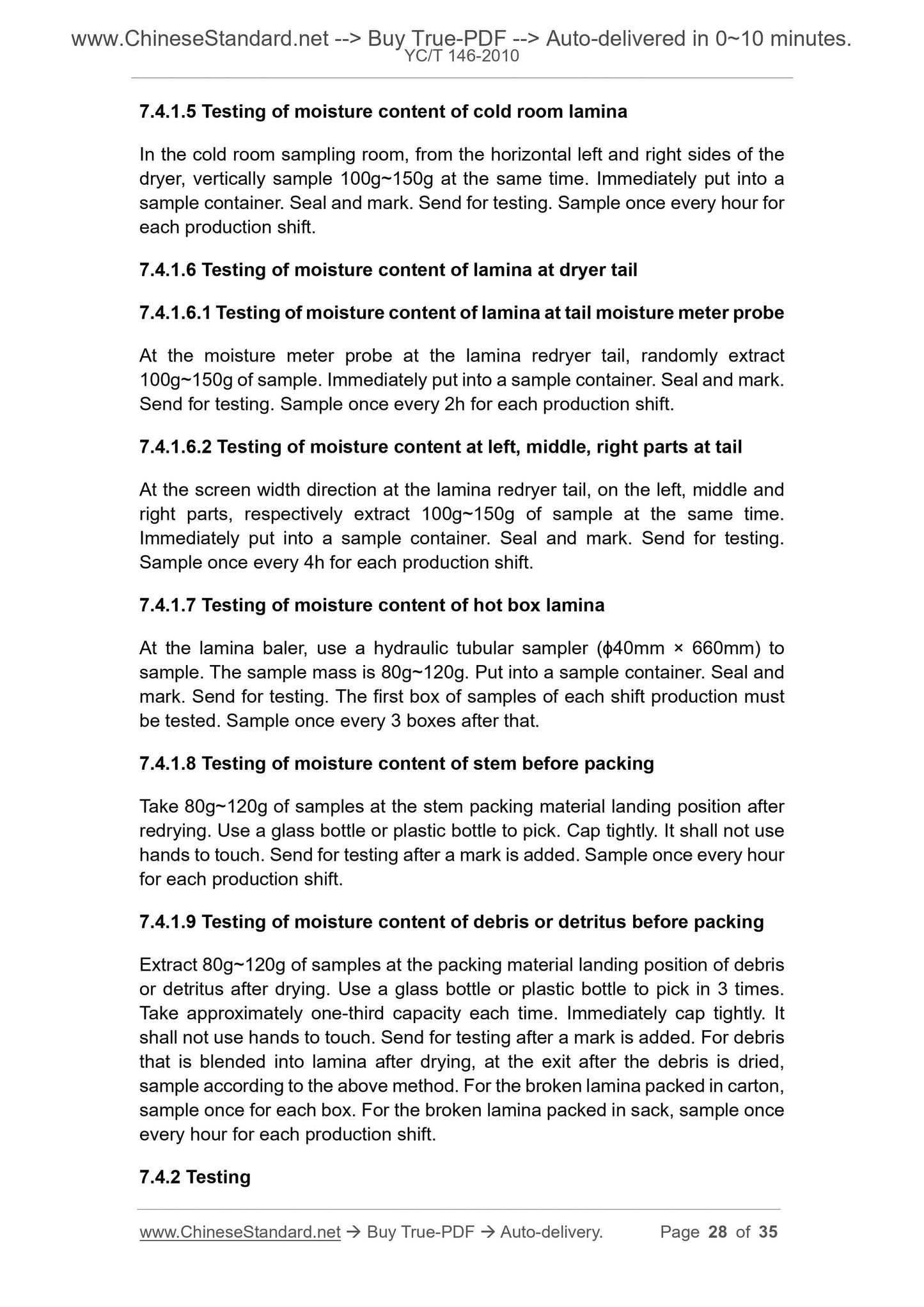1
/
of
12
www.ChineseStandard.us -- Field Test Asia Pte. Ltd.
YC/T 146-2010 English PDF (YC/T146-2010)
YC/T 146-2010 English PDF (YC/T146-2010)
Regular price
$370.00
Regular price
Sale price
$370.00
Unit price
/
per
Shipping calculated at checkout.
Couldn't load pickup availability
YC/T 146-2010: Leaf tobacco - Threshing and redrying - Technical specification
Delivery: 9 seconds. Download (and Email) true-PDF + Invoice.Get Quotation: Click YC/T 146-2010 (Self-service in 1-minute)
Newer / historical versions: YC/T 146-2010
Preview True-PDF
Scope
This Standard specifies technical requirements for each process of threshingand redrying.
This Standard is applicable to flue-cured tobacco and burley tobacco.
Basic Data
| Standard ID | YC/T 146-2010 (YC/T146-2010) |
| Description (Translated English) | Leaf tobacco - Threshing and redrying - Technical specification |
| Sector / Industry | Tobacco Industry Standard (Recommended) |
| Classification of Chinese Standard | X87 |
| Classification of International Standard | 65.160 |
| Word Count Estimation | 25,219 |
| Date of Issue | 2010-12-01 |
| Date of Implementation | 2011-01-01 |
| Older Standard (superseded by this standard) | YC/T 146-2001 |
| Quoted Standard | GB 2635; GB 8966; GB/T 18771.2-2002; GB/T 21136; GB/T 21137; YC/T 31; YC/T 137.1; YC/T 147; YC/T 159; YC/T 160; YC/T 161; YC/T 162; YC/T 217; YC/T 236 |
| Regulation (derived from) | National Tobacco Science (2010) 414 |
| Issuing agency(ies) | State Tobacco Monopoly Administration |
| Summary | This standard specifies the various processes Dayefukao major technology requirements. This standard applies to flue-cured and burley tobacco. |
Share
